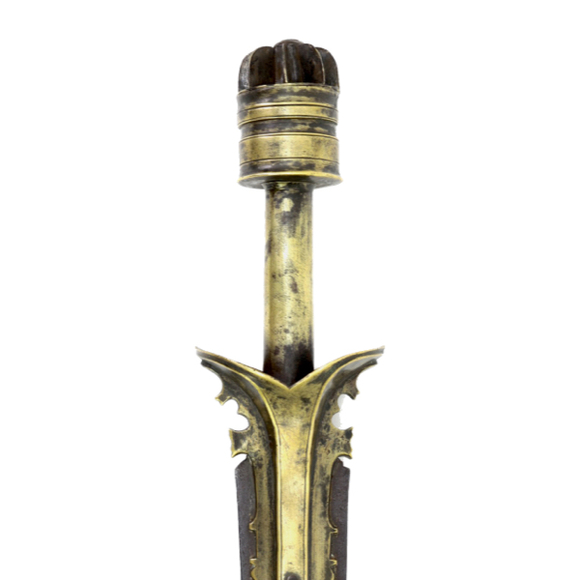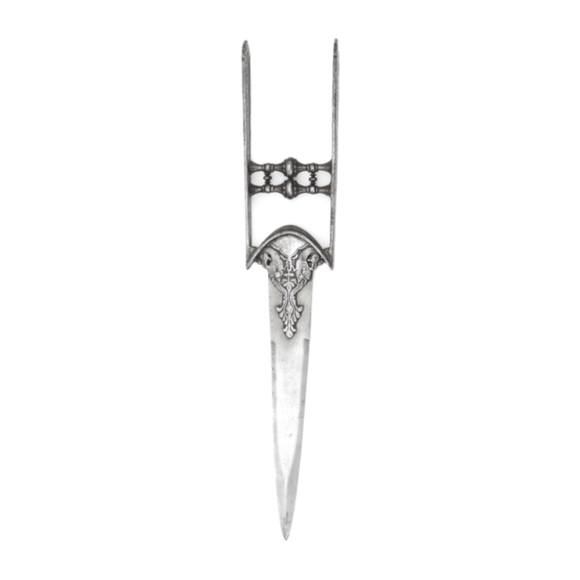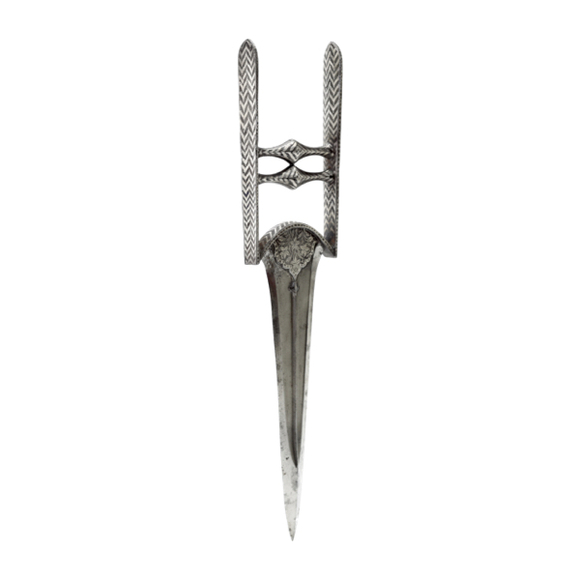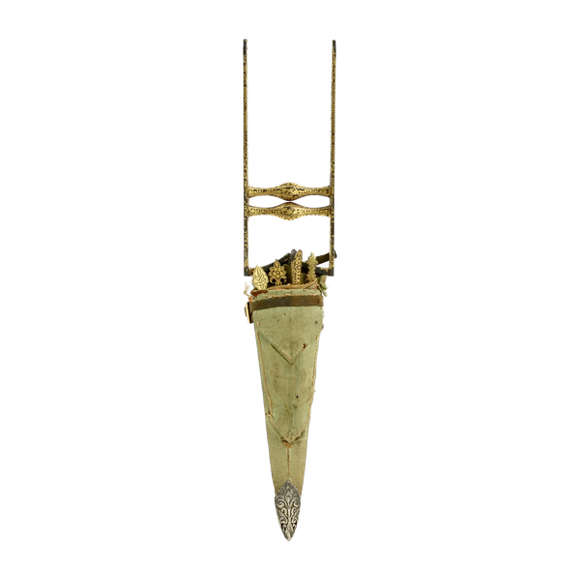An early fighting piece with strong reinforcing langet and broad, cobra shaped tip.

45 cm
28.2 cm
Base 3 mm
Middle 2 mm
Near tip 1.5 mm
Base 51 mm
Middle 35 mm
Near tip 20 mm
788 grams
Blade/hilt junction
Vijayanagara empire, South India
Steel, iron, brass solder
Circa 1550-1600
Introduction
Hooded katar with long, wide blades are seen in the hands of statues at Seshagiri Rayar Mandapam. This is a 16th-century pillared hall in the Sri Ranganathaswamy Temple in Srirangam, Tamil Nadu. A marvelous feat of late Vijayanagara architecture.

Photo by Richard Mortel from Riyadh, Saudi Arabia.
Wikimedia Creative Commons
The style seems to have quickly fallen out of use in the early 17th century, coinciding with the decline and fall of the Vijayanagara empire. Smaller katar without the hood became more and more popular, also in the south, and replaced this style completely.
Further reading
Robert Elgood; Hindu arms and Ritual, Eburon Publishers, Delft. 2004. Pages 145-150.
Description
An early hooded katar with a wide, flat blade that gradually tapers to a point. It has a strong ricasso with the edge bevels starting a little further up the blade. Some hints on the blade surface suggest a forge-folded construction.
The blade is firmly held in place by two thick langets that project from the hilt, to which it is riveted with three rivets. It is further secured by the short tang that is peened on the other side of the hilt. Langets are engraved with stylized palm-like motifs on one side.
The hilt has an arched base, two thick side-bars and a very sturdy shield that protects the hand. The shield is decorated with shallow floral engravings at the base. The inside shows a thickly patinated hammered curface.
The edges of the shield are grooved, and the end is hooked, all to prevent a weapon from slipping into the hand or arm after it hit the shield.
The grip consists of two spool-shaped grips, forged and chiseled to shape.
Condition
Some denting to the blade. A tiny chip off the tip. No signs of excess cleaning, no pitting. In pretty decent, original condition, especially for age.
Conclusion
A simple version of the Vijayanagara hooded katar, of practical, sturdy construction with thick shield. It is not great in terms of quality and condition, but priced accordingly.












Of a style often associated with Tanjore, the seat of the Vijayanagara empire.






